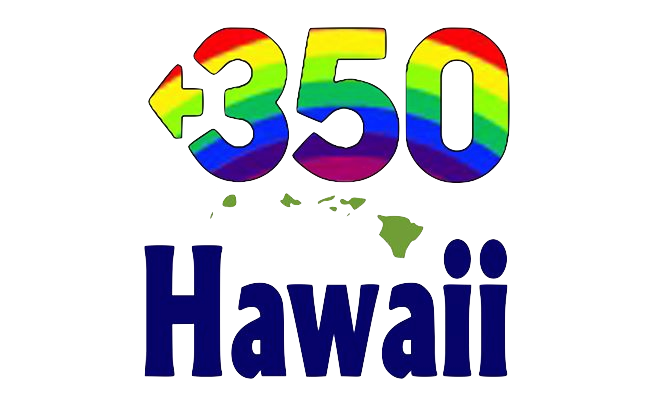350Hawaii sent this letter on 10/14/2018:
Dr. Peter Kozelka
Scientist
US EPA Pacific Southwest, Region 9
75 Hawthorne St.
San Francisco, CA 94105
Ms. Alexis Strauss
Senior Policy Advisor
US EPA Pacific Southwest, Region 9
75 Hawthorne St.
San Francisco, CA 94105
cc: Dr. Bruce Anderson
Director, Hawaii Department of Health
1250 Punchbowl Street
Honolulu, HI 96813
Dear Dr. Kozelka,
I understand Ms. Claudia Rohr has informed you of various issues surrounding Hu Honua’s power plant near Hilo, HI. Additional facts have recently come to light, and 350Hawaii.org requests that you bring these up with the Hawaii Department of Health (HDOH).
Hu Honua’s nearly complete wood-burning power plant on the Big Island would create more CO2 emissions than burning coal; threaten endangered Hawksbill turtles in adjacent ocean waters; inject billions of gallons of wastewater with 30 chemicals into wells 80 feet from the cliff shoreline; and cause major deforestation, just when we need our forests the most to sequester carbon.
Firstly, Hu Honua’s own materials claim a direct hydrologic connection from their injection wells to the ocean. We believe this connection, and a 2018 precedent in the 9th U.S. Circuit Court of Appeals involving wastewater in Lahaina, mandate an EIS, and require Hu Honua to obtain an NPDES permit rather than the UIC permit they currently seek. During the appeal, EPA and DOJ filed an amicus brief supporting the lower court ruling. Ms. Strauss wrote us in February saying Region 9 would be working with HDOH to address these issues.
Hu Honua’s own modeling concluded that the thermal plume from their injection wells would emerge through the sea bed in three hours at 5.5 degrees C higher than ambient subsurface marine temperature. This would certainly kill the coral there, and likely harm other marine life. Section 11-54-9 of the HDOD Administrative Rules requires Hu Honua to cool the wastewater before injecting it, but apparently they do not plan to.
The chemicals Hu Honua will add to the water, some hazardous, could also harm or kill near-shore marine life, and possibly pollute drinking water sources.
In 2009, Hawaii Wildlife Fund and the National Marine Fisheries Service (NMFS) tracked endangered female Hawksbill turtles via satellite. Most of the females were found to live (and of course forage) along the Hamakua coast. So, this coast is a critically important feeding area for this endangered species. We believe NEPA requires a full EIS to assess the potential impacts of effluent on the nearshore marine environment and Hawksbill prey. The study is attached.
The sea cliffs only 80 feet from the proposed injection wells are extremely unstable, as shown by landslides during Hurricane Lane, which sent tons of debris into the ocean and likely onto any coral living there (see picture below). Injecting millions of gallons of water daily will inevitably cause more landslides and perhaps even earthquakes (see washingtonpost.com/science/2018/08/30/how-energies-companies-set-off-earthquakes-miles-away-their-waste-dumps/).
Mark Gordon, a Certified Hazardous Materials Manager and Environmental, Health and Safety Manager for JM Decker Group, Hawaii, says that draining too much water out of the Hakalau aquifer may be unsustainable. Local residents who require wells for fresh water also fear that draining 21.6 million gallons a day from the Hakalau aquifer will eventually leave their wells empty.
The plant creates other offsite environmental impacts that have not been properly reviewed such as the disposal of ash generated by the project, the erosion heavy rains will cause after logging large forest areas, and the loss of the forest’s carbon sequestration. Tons of ash added to the West Hawaii Landfill will significantly shorten its lifespan and may require additional changes to how it manages waste under RCRA. The tree stands are in an area of very high rainfall where runoff to streams is highly likely. Some stands abut native forests, so tree removal may cause fringing effects.
Secondly, Hu Honua seeks a separate NPDES Permit, No. HI S000557, for stormwater runoff. We oppose this permit.
Hu Honua currently runs stormwater through another landowner’s drainage system, where it mixes with runoff from a coal ash pile. When it is discharged forcefully at Outfall 003, it is contaminated. The drainage needs to be slowed so pollutants can settle out, and to prevent further erosion of the cliff and shoreline trail. The company’s construction site is surrounded by four miles of public trails near Pepeekeo Point that the community uses for fishing, diving, subsistence, and assorted recreation.
Section 11-54-4(a)(4) of the HDOD Administrative Rules prohibits pollutants “at levels … sufficient to be toxic or harmful to … aquatic life, or in amounts sufficient to interfere with any beneficial use of the water.” The ecosystem on the ocean floor is susceptible to smothering by silt in the runoff. Hu Honua does not discuss the effect of its concentrated discharges on this ecosystem.
We respectfully request that you require:
* An EIS covering Hu Honua’s injection wells, stormwater runoff, CO2 emissions, ash disposal, erosion and loss of carbon sequestration.
* County-approved drainage improvements to slow down storm water and settle out pollutants; and testing for contaminated soil.
Thank you for your consideration.
Brodie Lockard
350Hawaii.org



